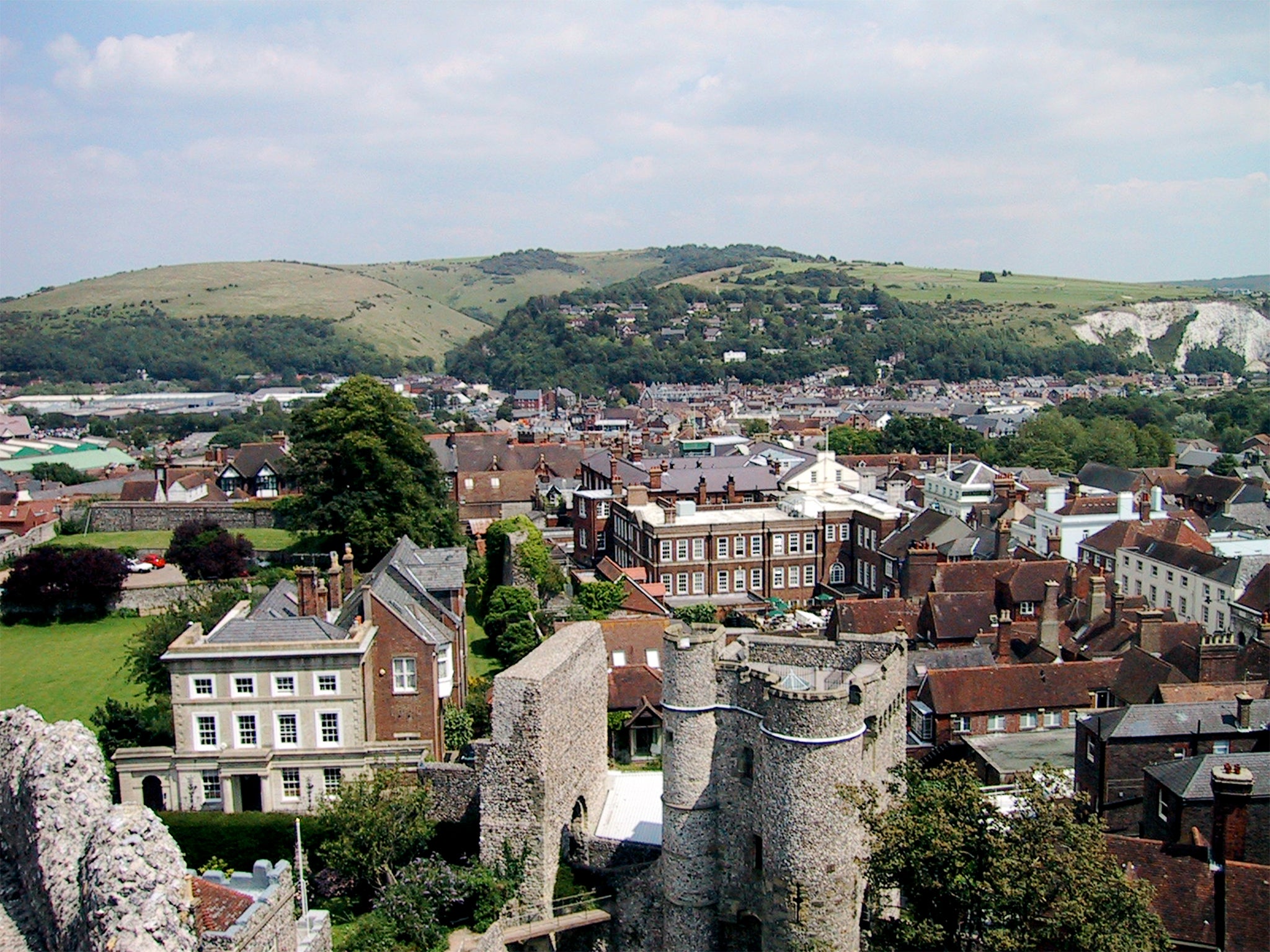Lewes District Council and British developer Santon at war with locals over redevelopment plans
The Sussex property hotspot of Lewes is irresistible to developers - but local people are fighting back in style

The Sussex town of Lewes, embedded in a fold in the South Downs, is popular with hipsters, New Agers and academics from the nearby University of Sussex. Known for its steep streets, historic buildings, bonfire societies and Glyndebourne, the country house that is a magnet for opera lovers, it presents a calm, cultured face to the world.
But the community has become sharply divided by plans to regenerate a 14-acre site in the centre of town that is home to the historic Phoenix Iron and Steel Works.
Over the past decade, this collection of industrial buildings dating back to 1832 has become a home for more than 200 artists, inventors and craftspeople. The Phoenix community ply their trade in an extraordinary warren of workshops that resembles a Terry Gilliam dreamscape. Luminaries include Arthur Brown, the pop musician best known for his 1968 hit “Fire”, the painter and art historian Julian Bell, and the master craftsman William Hardie,
Lewes District Council and Santon, a British developer backed by South African investors, want to regenerate the site as the North Street Quarter, a project they describe as a “vibrant, mixed use neighbourhood” incorporating 416 homes. Controversially, they plan to demolish the big ironworks sheds that house the Phoenix artists, a proposal that has alarmed both the occupants of the workshops and many Lewes residents. The council admits 2,676 local people have expressed “deep concern”, but says they represent only 3 per cent of the district population. The council regards the project as a “landmark” for the town.
Santon has allowed the Phoenix community to remain in the ironworks at nominal rents, and says they have offered them workspaces in the North Street Quarter, or on a 7,000 sqm industrial estate being built on the other side of the river Ouse. A spokesperson for the Lewes Phoenix Rising action group refutes this: “Most of the businesses have never been offered anything and remain in the dark as their leases come to an end. The few that have say the alternatives are either semi-derelict, already occupied, or unaffordable.”
The loss of creative spaces isn’t the only reason the North Street Quarter is opposed. Some locals are concerned at the impact it will have on soaring house prices. Lewes is a property hotspot says the estate agency Savills: prices are forecast to rise 21 per cent by 2020. Meanwhile, 1,400 families in the Lewes district are on the council house register, and no housing in the area is affordable to low-income families, except at social rent levels.
Santon’s project director, Clive Wilding, says he will “strive” to ensure that 40 per cent of the North Street Quarter housing will be cheaper than the standard affordability target of 80 per cent of the market price – but he cannot guarantee it. And at anything approaching 80 per cent, the “affordable” housing in the scheme will only be accessible to people who are relatively secure financially, opponents say.
Phoenix Rising has submitted an alternative development scheme to the South Downs National Park Authority. Drawn up by the eminent Danish architectural practice, CF Moller, it has been refined by a trio of Cambridge architecture PhD researchers, led by Will Anderson. They have worked for international architects including Renzo Piano.
“Santon is focusing on raising ground levels to create a large underground car park, building flood defences, and demolishing everything on site,” says Mr Anderson. “We are focusing on retaining and refurbishing some buildings, including the ironworks, for low-cost workspace to keep the creative and manufacturing cluster on site.”
Phoenix Rising says its scheme is more socially inclusive: it matches the number of houses that Santon wants to build, but has 49 extra social-rent homes. “This is the biggest development the town has ever had,” says Andrew Simpson, a local planning consultant and Phoenix Rising director. “The district council say they are involved as the landowner, but they’re not responding to the development’s economics. So, who’s representing the interests of Lewes people? There are conventional businesses here that co-exist beautifully with the creative businesses. Why is the council going against this?”
Santon says its scheme is viable and deliverable, and “meets every aspect of approved local planning policy”. The firm’s architects evolved their designs in response to criticisms from a succession of design review panels; and there has been a series of public consultations.
Mr Wilding admits the situation has generated “a key debate between fairness and local fairness”. The remark encapsulates a pivotal question that the South Downs National Park Authority faces on 10 December: how to weigh fairness to the needs of commercial development with fairness to local history, established community activities and efforts to ensure the widest possible range of new housing? The planners are due to review Phoenix Rising’s scheme on 19 November – three weeks before deciding on the Santon proposal. This suggests they may be willing to drill a little deeper into the architectural and human potential of the North Street Quarter.
Subscribe to Independent Premium to bookmark this article
Want to bookmark your favourite articles and stories to read or reference later? Start your Independent Premium subscription today.



Join our commenting forum
Join thought-provoking conversations, follow other Independent readers and see their replies
Comments